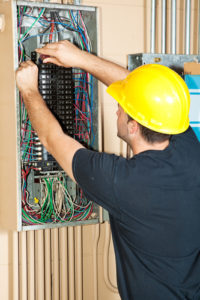Having certain safety devices within one’s home definitely provides the protection and peace of mind that homeowners need to feel comfortable and at ease. Safety switches and circuit breakers, can fall into that category as they are two devices that promote safety and prevent electrical damage in the home. It is important however, to understand the difference between the two as they are often perceived as the same thing, when in fact, they’re not.

The Difference Between Circuit Breakers and Safety Switches
Safety switches or residual current devices (RCD’s), are devices designed to protect against electrocution and other fire hazards. These devices are required by law to be installed within the switchboard component in the home.
Safety switches function by monitoring the current flow into live and neutral wires that supply current to an electrical system. If a problem is detected that may pose a risk to safety, the device automatically shuts the power off within 0.03 of a second.
Having one safety switch in the home is not sufficient to protect a person from electric shock as the safety switch only offers protection from shock on a particular circuit. Since this is the case, homeowners should consider having safety switches installed in all circuits throughout the home to ensure additional safety.
Circuit breakers or fuses are device, that are incorporated within your main switchboard and function to protect the wiring from power surges and overloads. They can be operated both manually or automatically and are used to switch off an electrical supply to all sources.
Circuit breakers provide short-circuit and overload protection however, in modern electrical systems currents can vary with some being higher than some. Over time electrical engineers have emphasized on more innovative ways to produce circuit breakers that facilitate the current found in several modern electrical systems.
Although circuit breakers look similar to safety switches and serve to protect and prevent against damage, they have differing functions. Safety switches function to monitor current and detect possible issues or glitches in the flow of current into wires while circuit breakers switch off the electrical supply to a load. Although these tools offer protection none of them can protect against electrocution. Nevertheless, since the differences and functions have been outlined and homeowners are a bit more educated as to what these tools are and what roles they play. Be on the cautious side and don’t hesitate to acquire your circuit breaker or safety switches for your home today. Contact us for more information on how you can get started.

